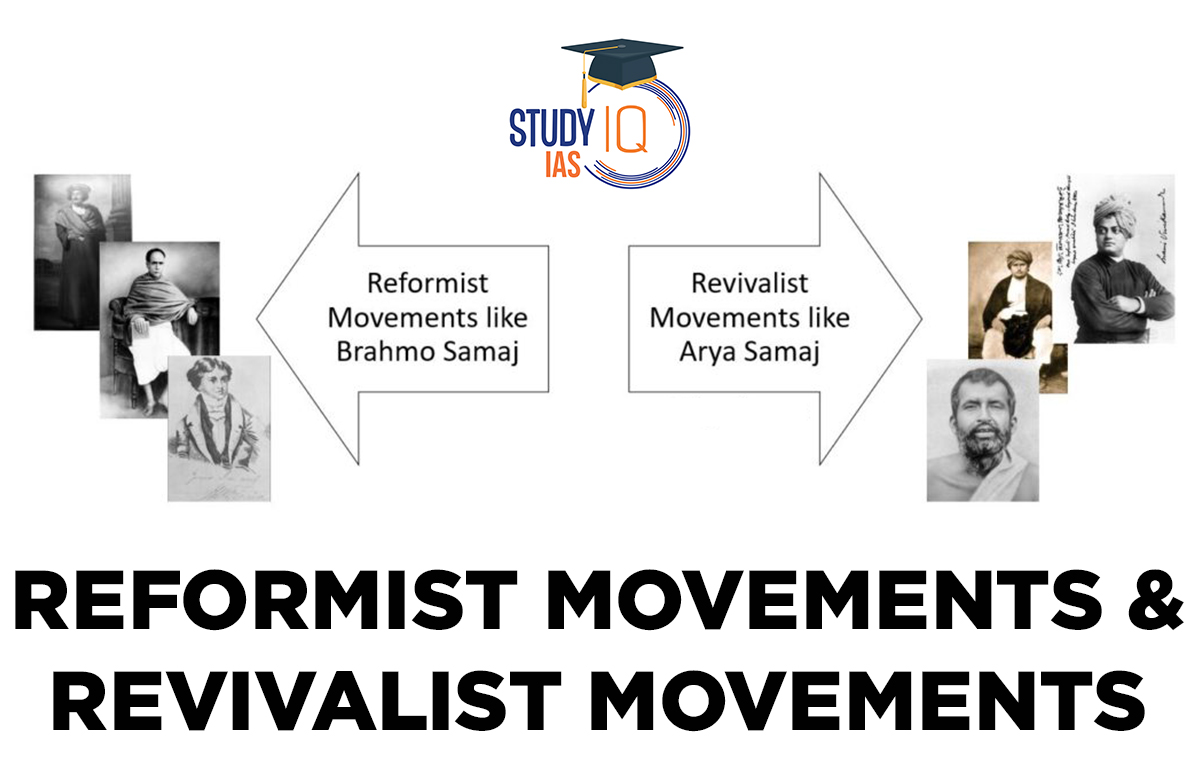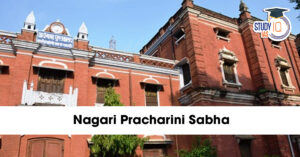Table of Contents
Reformist Movements & Revivalist Movements
Read all about Reformist Movements & Revivalist Movements. Reformism is a political doctrine that favors modifying an existing structure or institution as opposed to getting rid of it and replacing it. A progressive movement is a type of social organization that works to create social or political structures that are more in line with the aspirations of the community. Others, like Mahatma Gandhi’s flywheel and the identity village economy, rely on local communes while others emphasize personal development as a means of societal change. This article has all the information about Reformist Movements & Revivalist Movements for UPSC Exam Preparations.
Read More: Sargeant Plan of Education
Reformist Movements & Revivalist Movements Meaning
Reformist movements relied more on reason and rationalism in accepting or rejecting a social custom or religious tradition. Reformist movements were influenced by contemporary Western notions in the socio-cultural arena, such as freedom of choice in a life partner and gender equality. Leaders of these movements declined to completely remake society along western lines, despite accepting modern western principles. They aimed at modernization not westernization.
The lost purity of the faith they aspired to restore was more important to revivalist movements than anything else. Movements toward revivalism were more in tune with tradition than with reason and conscience. These initiatives sought to show the progressivism and rationalism of traditional Indian sociocultural beliefs. Examples include the Wahabi Movement, Deoband Movement, and Arya Samaj Movement.
Both Reformist Movements & Revivalist Movements contributed to the advancement of Socio-Religious Reforms in society, which finally sparked the emergence of a contemporary and forward-thinking society.
Read More: Wardha Scheme
Reformist Movements & Revivalist Movements Classifications
Some attempts to categorise movements include the desired change’s direction and speed. In this context, adjectives like revolutionary, conservative, liberal, and conservative are commonly used. The phrases “revolutionary” and “reform,” which are usually employed in this context in a slightly different connotation from that mentioned above, are seen to advocate for swift, abrupt change while reform movements advocate for gradual, evolutionary change.
An additional typology was offered by American sociologist Lewis M. Killian based on the direction of the shift that was supported or resisted. A reactionary movement aims to fix an old social problem, whereas a progressive movement wants to create a brand-new social structure. A conservative movement argues for the preservation of established norms and standards while rejecting changes promoted by other movements or those that seem to arise as a result of cultural drift.
According to Killian and the American psychiatrist Ralph H. Turner, it can sometimes be useful to classify social movements according to how they are seen in the public, the type of resistance they elicit, and the available means of action. This approach seeks to eliminate the reformist and revolutionary categories’ inherent subjective evaluation of goals. A respectable movement is one that does not appear to put the principles or goals of any significant segment of society in danger.
When there is no competing movement advancing the same objective, it is termed non-factional. The respectable nonpartisan movement faces challenges with apathy and nominal support, but it has effective channels for communicating its values. While a strong factional movement must contend with rival organizations working toward the same overarching objective, it also has realistic strategies for growing its influence.
A movement that seeks to oppose the beliefs of powerful and significant interest groups in society is branded as revolutionary and is violently suppressed. As a result, it is forbidden from advertising its program in legitimate ways. Another movement is labeled as bizarre rather than respectable or dangerous; this movement is derided and has limited access to legal means of expression.
Read More: Sadler Commission
Reformist Movements Types
1. Brahmo Samaj
The movement, which Raja Ram Mohan Roy (1772–1833) founded in Calcutta in 1828, fought against idolatry, polytheism, caste tyranny, pointless rituals, and other societal ills as Sati, polygamy, the purdah system, child marriage, etc. In addition, society fought for women’s rights such as widow remarriage and female education. Additionally, it challenged and criticized Hindus’ prevalent superstitions.
2. Aligarh Movement
In Aligarh, Sayyid Ahmed Khan established Mohammedan Anglo-Oriental College in 1875. It afterwards changed its name to Aligarh Muslim University. It gave Muslims access to modern education.
3. Prarthana Samaj
Keshub Chandra Sen assisted in establishing the Prarthana Samaj in Bombay in 1863. The Prarthana Samaj promoted monotheism and condemned caste prejudice and priesthood dominance. Due to Veeresalingam, a Telugu reformer, its activities also reached South India. Essentially a philosopher, Chandavarkar was a fantastic leader of the Prarthana Samaj.
Read More: Raleigh Commission
Revivalist Movements Types
1. Arya Samaj
Swami Dayanand Saraswati (1824–1833), who established the Arya Samaj in 1875, was the driving force behind the social and religious change in North India. Caste structures, rituals, priesthood, animal sacrifice, idolatry, and polytheism were all fiercely opposed by this civilization. Additionally, it promotes the transfer of western scientific knowledge. They campaigned for social equality, improved the lot of women, and opposed untouchability and caste prejudice.
2. Deoband Movement
It was a movement of revivalists. A school was established at Deoband in 1866 by Rashid Ahamad Gangohi and Muhammad Qasim Wanotavi (Uttar Pradesh, Saharanpur District). The Deoband movement sought to improve the lot of Muslims via religious instruction.
3. Theosophical Movement
Although this group is most often identified with Annie Besant, Madame Blavatsky and Colonel Olcott actually started it in New York (after moving to Madras) in 1875. The study of classical Hindu, Buddhist, and Zoroastrian philosophies was encouraged. It supported the Upanishads’ and the Vedas’ doctrine of universal brotherhood. It highlighted occultism.
Read More: Hunter Commission
Reformist Movements & Revivalist Movements UPSC
We are familiar with social reformers, reformist movements, and movements for socio-religious reform. Different Socio-Religious groups in British India not only helped to reform Indians but also fueled the rise of nationalism there. Continue reading to discover more about the various social and religious movements that influenced nineteenth- and twentieth-century Indian civilization. Students can learn everything they need to know about reformist and revivalist movements for the UPSC examination in this article.
Read More: Macaulay Minute


 Nagari Pracharini Sabha Revival: Backgro...
Nagari Pracharini Sabha Revival: Backgro...
 Ryotwari System in India, Features, Impa...
Ryotwari System in India, Features, Impa...
 Battle of Plassey, History, Causes, Impa...
Battle of Plassey, History, Causes, Impa...





















